Green Plants
House Plant Online Shop Website
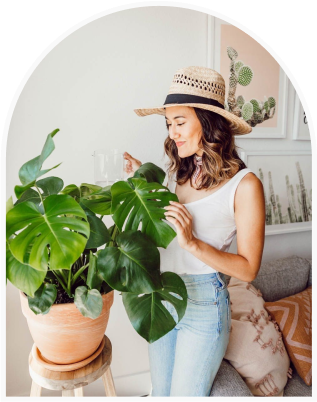
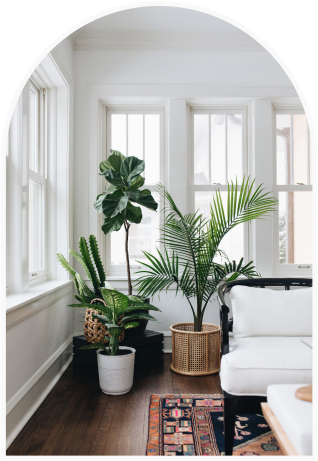

What is “Green Plants”?
"Green Plants" is an indoor plant shop dedicated to simplifying the process of shopping and caring of plants. One of the key features of this website is the "Plant Finder", a tool designed to help users select the ideal plants based on their specific circumstances.
Project Overview
Our team decided to design an e-commerce website in response to the growing demand for indoor plants, a trend driven by urban living where personal garden space is limited. Recognizing that purchasing plants online can be challenging, we aimed to enhance the shopping experience for both novice and experienced indoor plant enthusiasts.
My Contribution
My primary responsibility centered around UX Design, yet I actively engaged in every phase of the project, spanning from conceptualization to the development of the prototype.
 Role
RoleUX/UI designer
 Duration
Duration8 Weeks
 Team
TeamGroup of 4
 Tools
ToolsFigma, Miro, Photoshop
Design Goal
Streamline Shopping Experience
Educate Customers and Promote Plant Parenting
Personalize Recommendations based on users' specific environments and care preferences
Design Process
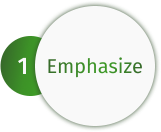
Interview
Competitive Analysis
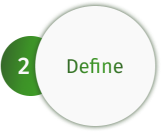
Persona
Problem Statements
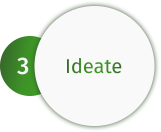
User Flow
Site Map
Sketches

High Fidelity Prototype
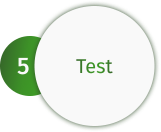
Iterations
Usability Test
A/B Testing
Emphasize
Interview
We interviewed 9 people to learn about their experiences with plants, and their challenges while shopping and taking care of plants.
Existing Pain Points
Having difficulty to find a plant that suits customers conditionespecially the ones that are not familiar with different kinds of indoor plants.
Facing challenge to recognize the exact size and scale of the plant when buying plants online.
Not being user-friendly and hardly being navigated.
Competitive Analysis
Analysis Objective
Objective 1: Understand which ones are the main features of our competitors show to their users
Objective 2: Understand the strengths and weaknesses of these competitors to identify possible opportunities for our product.
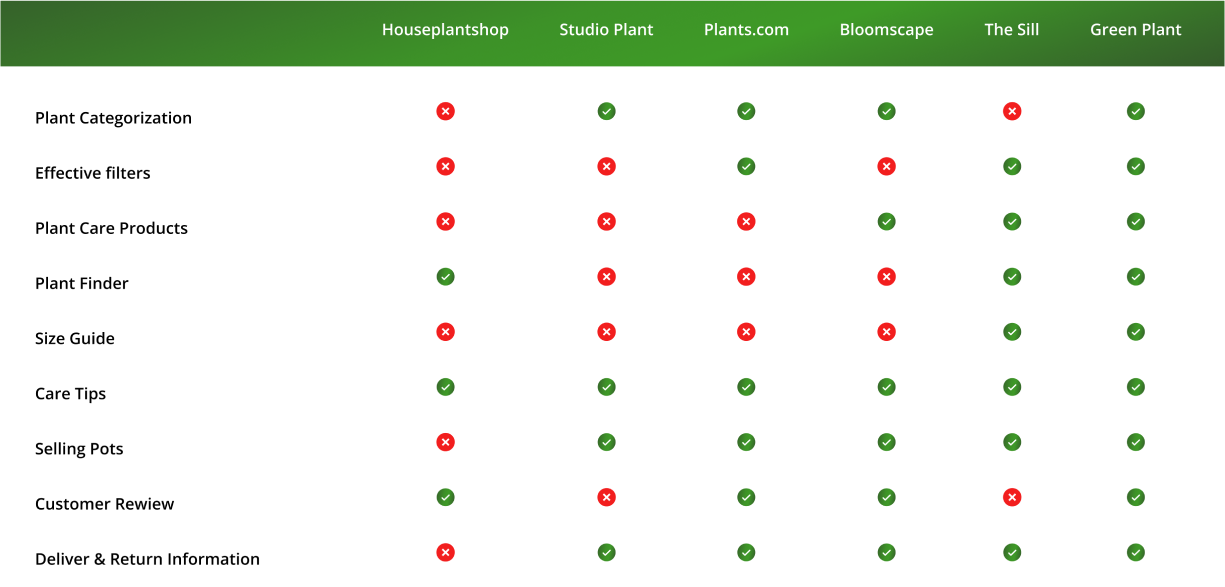
Existing Pain Points
For customers who are not familiar with various plant types, identifying the ideal plant for their specific conditions can be a challenging task.
Not having appropriate guidance on plant sizes.
Failing to provide detailed size and scale information to customers when purchasing plants.
Lack of existing suitable pots, plant care products and gardening tools while purchasing an indoor plant.
The plant categorization was inadequate, not properly classifying and organizing the wide variety of indoor plants.
Define
Persona
In the defining phase, we developed a persona representing an end user and their narrative.
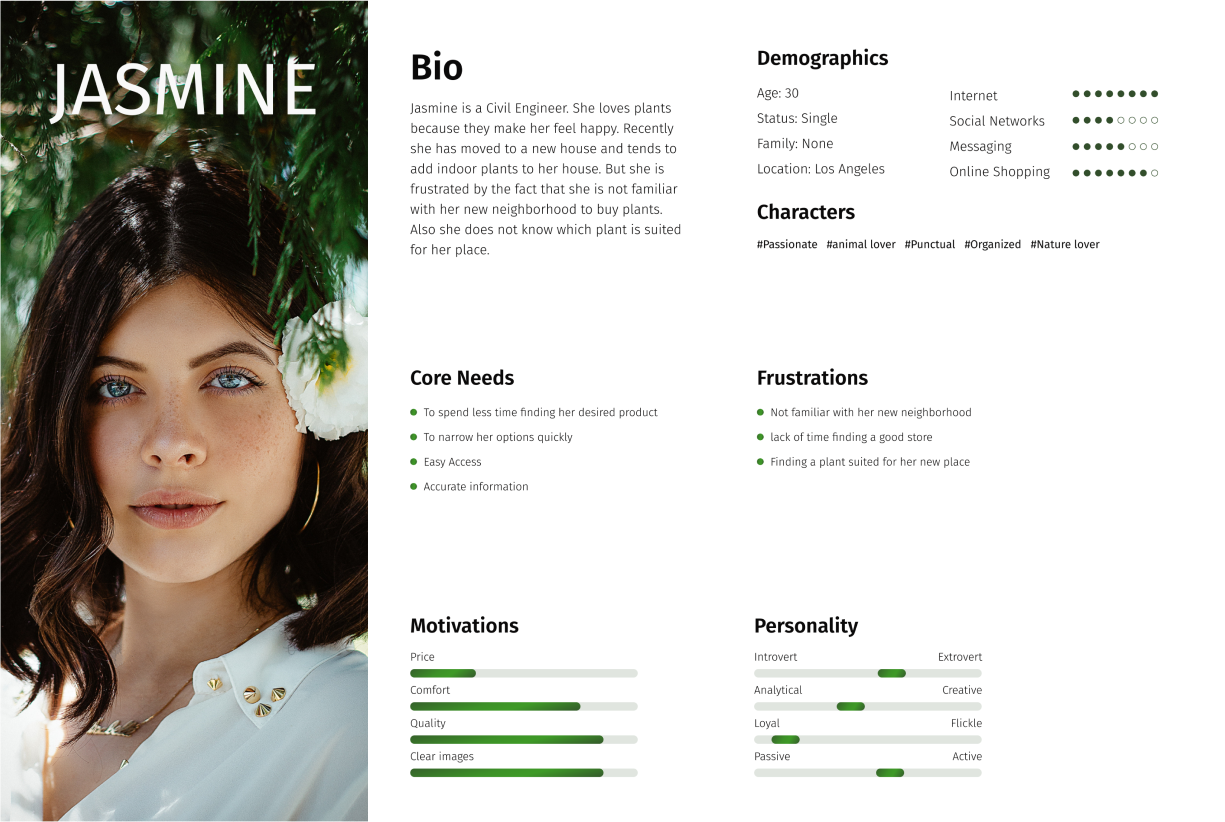
Problem Statements
3 key challenges seemed to have emerged from our research:
How might we?
"How might we help customers to find their desired plant based on their situation?"
"How might we simplify customers' access to pots, plant care products, and gardening tools, ensuring convenient and satisfying gardening experiences?"
"How might we accurately demonstrate the plant's size to customers and provide an effective size guide?"
Potential Solution
Upon thorough analysis of all our research data, we gained a comprehensive understanding of the challenges associated with our project and attempted to address them by incorporating a solution into our design.
Implementing a straightforward categorization of plants, enable individuals, even those without prior plant knowledge, to easily find suitable options; Categories include Low Light, Pet-Friendly, Easy Care, among others.
A quiz was proposed called "Plant Finder," designed to help users effortlessly discover plants suited to their unique conditions, offering an experience similar to in-person shopping.
Using authentic images that illustrate the size and scale, with photos of a plant in a room setting to clearly indicate its dimensions.
Individualized plant care instructions were provided for each plant to assist users in maintaining their plant's health.
Adding the option of choosing the suitable pot, with different size and color during the plant purchasing process.
Proper plant care products and gardening tools recommended to the users.
Ideate
User flow & Site map
To kickstart the design process, we implemented the task flow to comprehend user interactions with the product and determine ways to create a straightforward and efficient experience.

Additionally, we crafted the website's Information Architecture, ensuring a logical and user-friendly structure for organizing any volume of information.
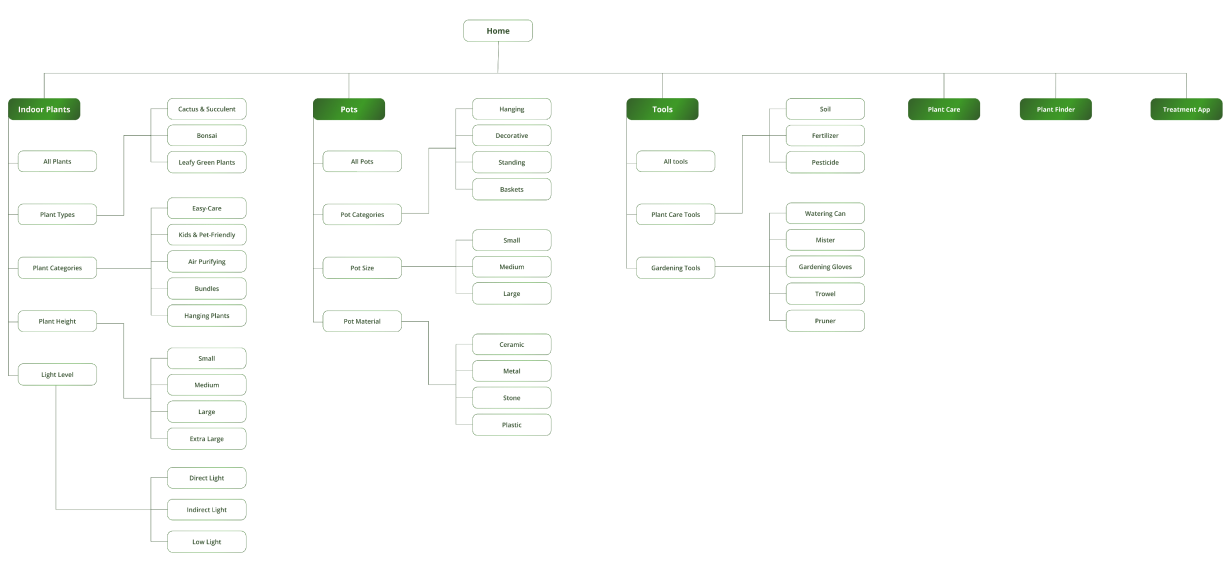
Design
Sketch
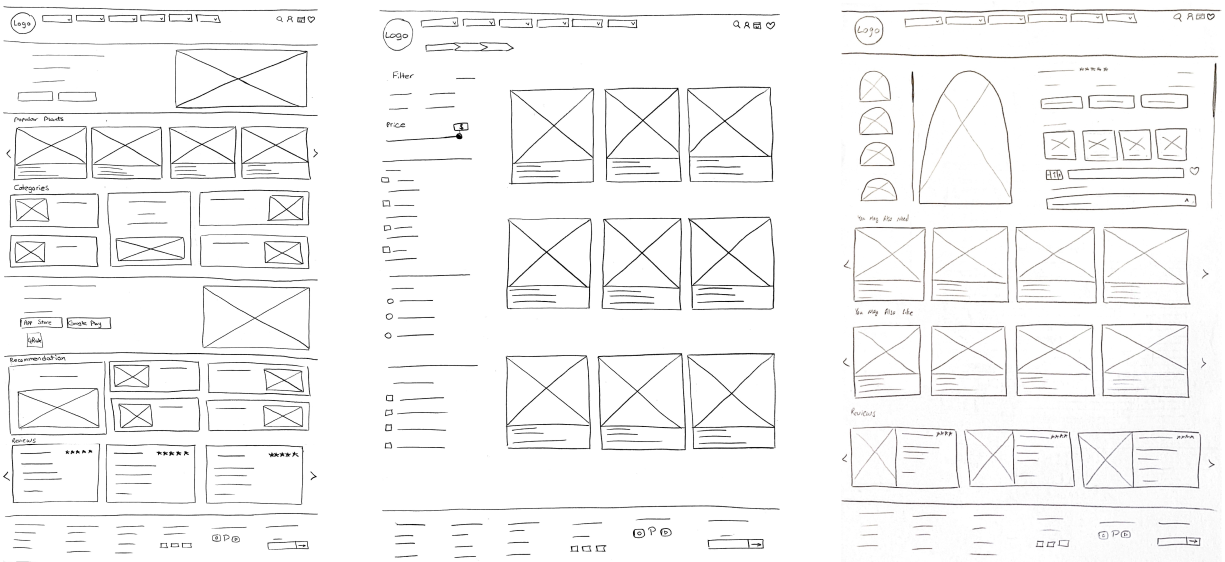
Design System
After sketching, we used Figma to create a digital version. Guided by the User Flow, we built a Mid-Fi prototype for Desktop site for usability testing. Our focus was on using visuals effectively to design an interface that respects users' time and needs, ensuring a positive shopping experience.
Mood Board
While creating the mood board, we were inspired by nature, particularly plants and leaves. Based on the mood board, we opted for green as the primary color. Considering the diverse range of green colors found in leaves, we decided to shift from a single shade to a gradient of greens.
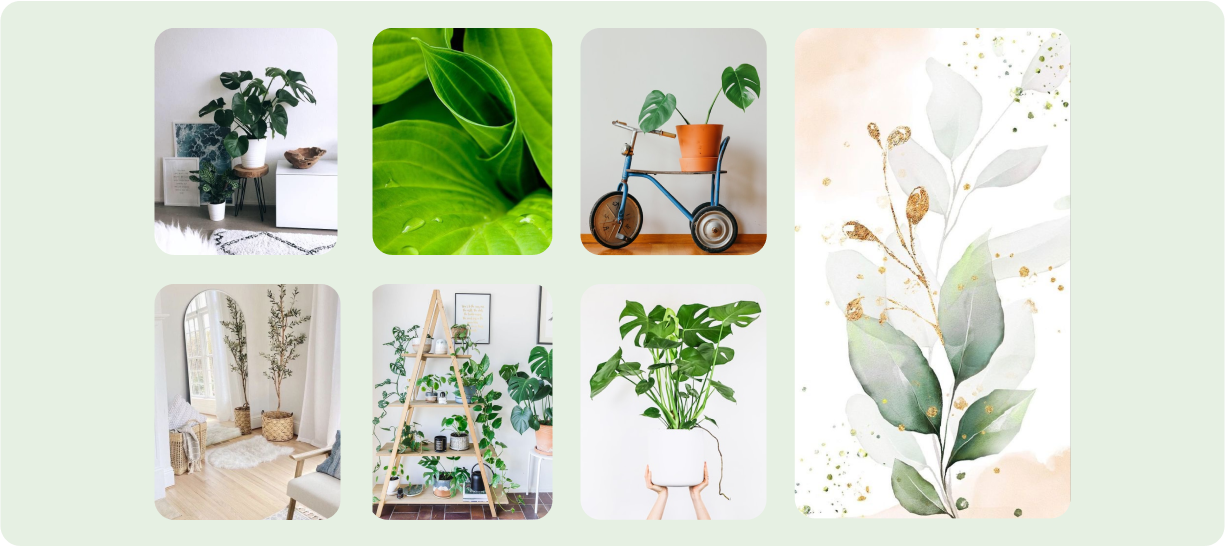
UI Kit

Test
Iteration and Usability test
We conducted our initial usability test with five participants, evaluating the website's usability through a specific task.
Landing Page Evaluation
The initial hero image and second design fail to effectively display indoor plants, leading to a lack of home ambiance and a setting that does not feel cozy or encourage the experience of caring for plants. Conversely, in the third hero image, a successful display of indoor plants is witnessed, evoking both the warmth of a home and the satisfaction of caring for plants.

Balancing the color spectrum of the gradient improved the readability of the text on the button, which was previously inaccessible to users due to imbalance.


At first, users were not able to see the other available sizes of plants; therefore, we presented all available sizes, also we introduced a starting price for each plant, denoted by "From," reflecting varying costs for different sizes.
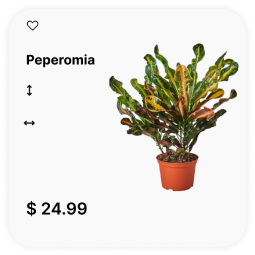
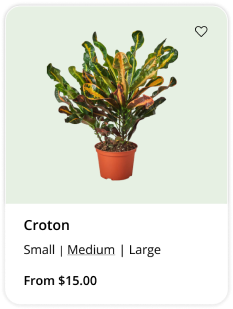
Product Page Evaluation
To provide a more tangible sense of scale for the plant, put it with various objects of known dimensions.
Displaying the width of each pot to simplify the selection process for users.
Changing the “What we offer” section to “You may also need” sectionto display more items and include details such as photos, materials, colors, etc.
Convert the information table to an accordion formatbeside the image, letting users see the fixed image while scrolling through information
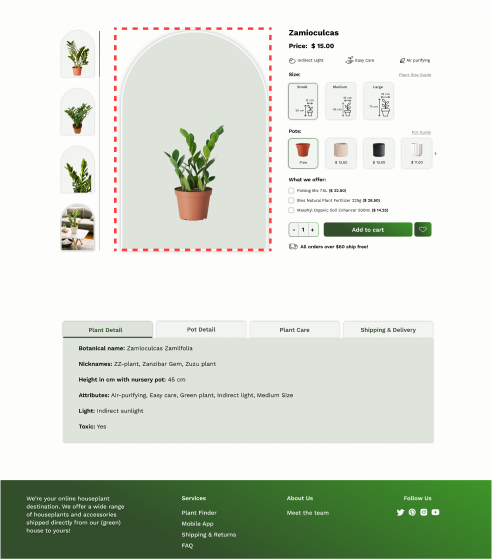
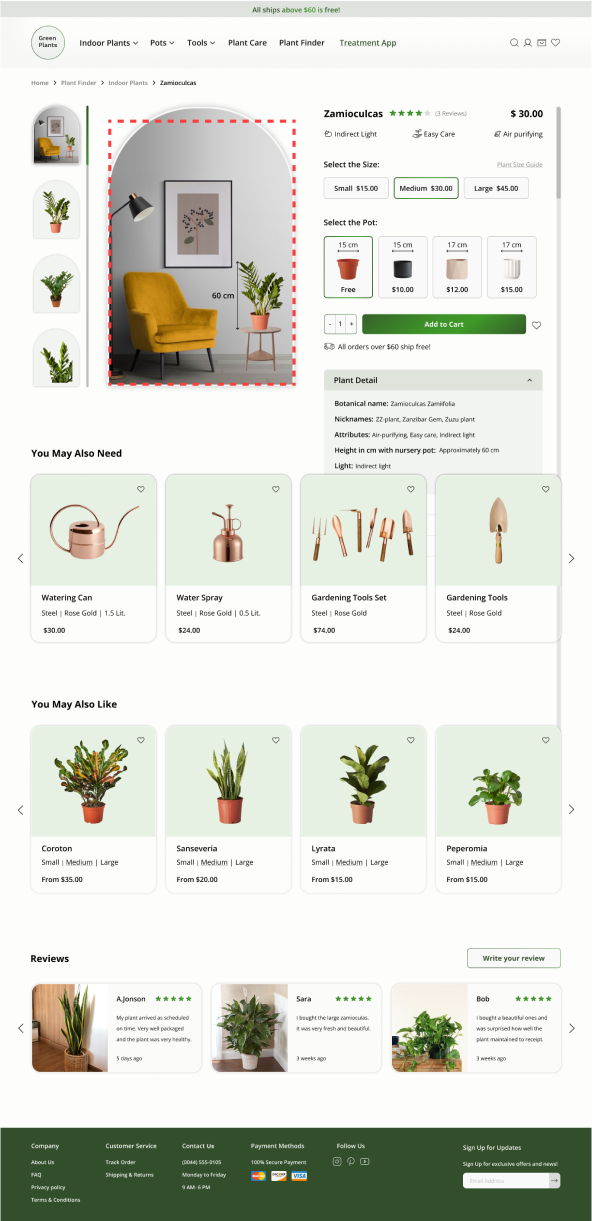
Size Guide
We considered four categories for plant size, each indicated by approximate height and width, and we utilized images featuring humans to better convey the dimensions of the plants for clearer comprehension.

A/B Testing
This A/B test was run among 6 participants. We evaluated the user satisfaction and functionality of two different designs for the results page, showing after plant finder quiz.
The results indicated that (Sample A) was preferred the most among participants in terms of functionality and appearance compared to (Sample B). Users could have better access and full control over their choices, saving more time when making their final selections. Hence, we proceeded accordingly.
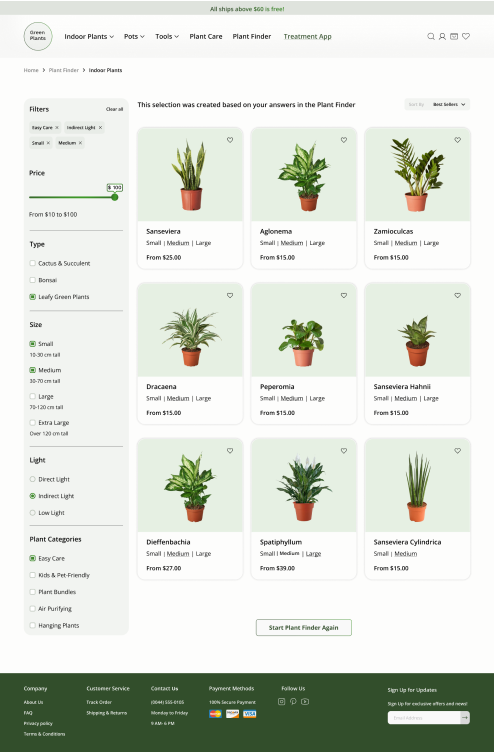
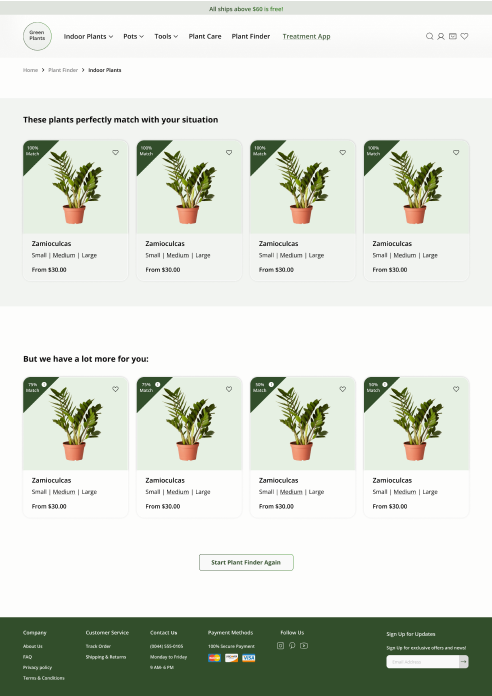
After incorporating feedback from usability testing, here are the final prototypes for Flow A and B.
Reflections
What I have learned from this project
I've realized that simplifying the online purchase process significantly enhances the overall shopping experience. Making it easy to order and checkout is vital for customer satisfaction.
Understanding the genuine needs and preferences of users is fundamental in creating a compelling eCommerce platform. Conducting user experience research is key to crafting a website or app that resonates with users.
Future Steps:
Now that we've designed this eCommerce indoor plant website, I aim to further enrich the user experience by:
Introducing engaging, educational, and entertaining content, along with enticing promotions, to encourage users to revisit website.
Streamline the Augmented Reality (AR) integration to ensure users can begin visualizing plants in their spaces with just a few simple steps.
Design an application dedicated to diagnosing plant health issues and providing tailored care recommendations.